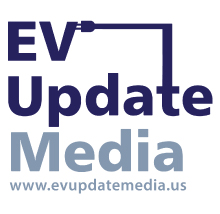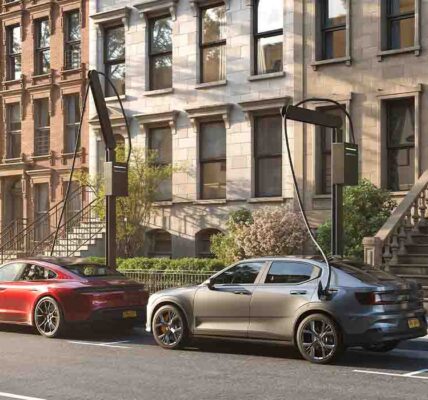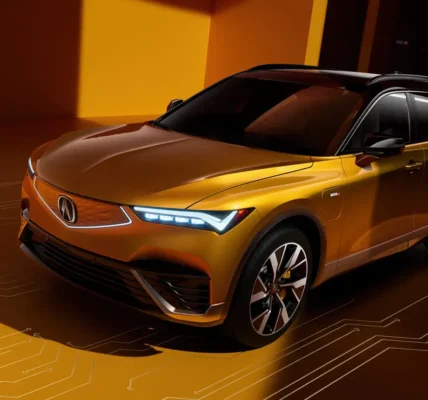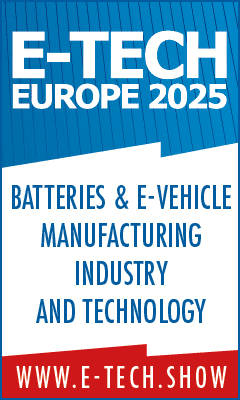Despite Tesla’s Sales Drop, Total EV Penetration in the US Rises to Record 9.8%: BY Model & USA-Made Content
The share of new EVs sold in the US in Q1 2025 rose to 9.83% of total new vehicles sold, up from a share of 9.26% in Q4 2024, and up from a share of 7.9% in Q1 2024, according to Experian’s quarterly report today. To be clear, these are battery-electric EVs without an internal combustion engine and do not include hybrids and plug-in hybrids.
We already saw that in California, non-Tesla EV sales soared in Q1 and all combined surpassed Tesla sales for the second quarter in a row, while Tesla sales dropped to a multiyear low, based on registrations data released by the California auto dealer association CNCDA earlier. Similar dynamics played out nationwide.
Top EV models and their US content.
US-made content in a vehicle is important amid the new tariff dynamics because tariffs don’t apply to US content; they only apply to the cost of foreign content (not retail price).
A Tesla Model 3, made in the USA with 75% US content, or a Model Y with 70% US content, is subject to much lower tariffs than a Ford Mustang Mach-E, made in Mexico with 13% US content, or a Honda Prologue, made by GM in Mexico with 12% US content.
So can Ford raise the price of a Mustang Mach-E to pass on the tariffs? Sure it can, but then sales will collapse and it can just go ahead and shut down production in Mexico because consumers will buy competing USA-made models from Tesla, Hyundai, and Volkswagen with a much lower tariff burden that manufacturers can easily eat without too much indigestion.
1 and #2: Tesla’s Model Y was still by far the #1 bestselling EV, with a share of 25.4% of all EVs sold in Q1, despite all the Oh Elon! problems Tesla has faced. Tesla’s Model 3 was #2, with a share of 14.4% of all EVs.
Both models are made in the USA, and they both are among the vehicles, including ICE vehicles, with the most US-content: the Model 3 with 75% US content, which is at the very top of the list, and the Model Y with 70% US content, according to data from the National Highway Traffic Safety Administration (NHTSA).
3 and #10, strange bedfellows: Ironically, the Honda Prologue was the #3 bestselling EV with a share of 4.9%, but Honda doesn’t have EV technology on the road – not yet. This is a General Motors product based on the Chevy Blazer EV, but with different sheetmetal and some Honda features.
And even more ironically, the Prologue outsold the Blazer EV by a wide margin: the Blazer EV was the #10 bestselling EV with a share of just 2.0%.
Both the Chevy Blazer EV and the Honda Prologue are made at GM’s Ramos Arizpe plant in Mexico. And they have just 12% US content.
4: Ford’s Mustang Mach-E was the #4 bestselling EV, with a share of 4.5%. It is made in Mexico, with just 13% US content.
5: Chevy’s Equinox EV with a share of 3.9%. It is made, you guessed it, at GM’s Ramos Arizpe plant in Mexico, with just 12% US content.
6: Hyundai’s IONIQ 5 with a share of 3.1%. The vehicles that are made in the USA at its new plant in Georgia have 63% US content. But some versions are still imported from Korea.
7: Tesla’s Cybertruck with a share of 2.72%, beating the next bestselling EV pickup, the Ford F-150 Lightning, by a hair. It is made in the USA and has 65% US content.
8: Ford’s F-150 Lightning with a share of 2.71%. While it is assembled in the USA, it has only 29% US content.
9: Volkswagen’s ID.4 with a share of 2.2%. Made in the USA, with a US content ranging from 68% to 71%, depending on the version.
Lease, loan, or cash: Monthly payments for the top 10 EVs.
Leasing is super-popular with EVs, and monthly payments are quite a bit lower than loan payments (though beware of the small print with leases, including the up-front payment).
Part of the reason is how the federal EV rebates are setup; they require a certain amount of US content of key components and materials, such as the battery. But vehicles that don’t qualify for the rebates can benefit from a loophole – as wide as a barndoor – that allows leased vehicles to qualify for the rebates, even if they don’t qualify under a purchase transaction [this nonsensical discrepancy is another reason why the rebates should be scuttled in the BBB].
Average monthly lease payments by model, of the top 10 leased EV models, range from $318 for the Volkswagen ID.4 (versus $667 for loans) to $684 for the BMW i4 (versus $866 for loans).
Honda is fully focused on leasing across all its models, and the Prologue was the most leased EV out there in Q1. Leases accounted for 89.8% of the sales, while 8.6% of the sales were financed with loans, and 1.7% were cash deals. Average lease payments came to $486 (versus $708 for loans).
The second-most leased EV of the top 10 leased EVs was the ID.4, with 88.1% leased, 6.3% cash deals, and 5.6% loans.
The Cybertruck, by contrast, was the most cash-purchased of the top 10 EVs: 24.3% of the sales were cash deals, 49.6% were financed by loans, and only 26.1% were leases.
The Model Y was the most loan-financed of the top 10 EVs with 50.0% of the sales being financed with loans, while 40.1% were leased, and 9.8% were cash deals. Average lease payments of $426 (v. $646 for loans).
Model 3 sales were 52.3% leases, 37.3% loans, and 10.4% cash deals. Average lease payments were $402 (v. $657 for loans).
For the Chevy Equinox, with 56.2% of the sales being leases, the average lease payment was $380 (v. $623 financed).








